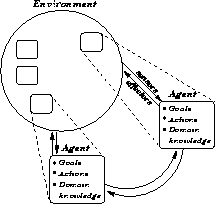
Figure 6: The fully general multiagent scenario. Agents model each other's goals and actions; they may also interact directly (communicate).
Multiagent systems differ from single agent systems in that several agents exist which model each other's goals and actions. In the fully general multiagent scenario, there may be direct interaction among agents. Although this interaction could be viewed as environmental stimuli, we present direct agent interaction (communication) as being separate from the environment.
From an individual agent's perspective, multiagent systems differ from single agent systems most significantly in that the environment's dynamics can be determined by other agents. In addition to the uncertainty that may be inherent in the domain, other agents intentionally affect the environment in unpredictable ways. Thus, all multiagent systems can be viewed as having dynamic environments.
Figure 6 illustrates the view that each agent is both part of the environment and modeled as a separate entity. There may be any number of agents, with different degrees of heterogeneity and with or without the ability to communicate directly. From the fully general case depicted here, we begin by eliminating both the communication and the heterogeneity to present homogeneous non-communicating MAS (Section 6). Then, in Section 7 the possibility of agent heterogeneity is added back in. Finally, in Section 8, we arrive back at the fully general case by considering agents that can interact directly.

Figure 6: The fully general multiagent scenario. Agents model each
other's goals and actions; they may also interact directly (communicate).